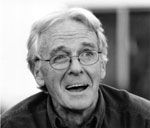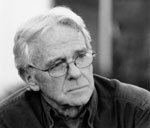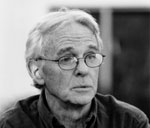|
The Interview: Charles O'Rear |
|||||||
|
|||||||
|
It is a beautiful spot. The neighbors are all really rich; it makes
me feel rich. Rubbing shoulders. Exactly. Seeing multi-trillion dollar houses go up. It’s a long way from Missouri. Yes. How did you go from there to traveling around
the world shooting photos for National Geographic and then to producing
books about Napa Valley? I started out as a reporter with the Kansas City Star. I was there
four years doing writing, photography, layout and I left as the
Sunday editor. For being 24 and not having a degree, that wasn’t
bad. Just seat-of-the-pants stuff. Then I went to the LA Times,
spent a couple years there and bailed out. I’ve been self-employed
ever since. How do you become a photographer for National
Geographic? You knock on their door until it falls down and they let you in.
‘You will hire me.’ It was perseverance and not giving
up. And I have to say, I consider myself not a very good photographer
when I got my first job at the Geographic. You didn’t tell them that. Of course not! I don’t know how much better I am today, but
bluffing goes a long ways. What made you want to shoot for them? It was the magazine. I grew up with it. In fact I grew up with
three magazines: Boys Life, National Geographic, and the Kansas
City newspaper and I ended up working with all three. You went to all kinds of far-flung places.
I read that you spent a summer in Siberia. How extensive was your
travel? Twenty-five countries and every state in the U.S.
I did. You notice the d-i-d?
Because travel has gotten progressively more difficult. Forget
the terrorist attacks — photographers are now a target for
the airlines. We are a pain in the neck for them. Because we carry
fragile equipment, we carry film that can be damaged either through
heat or through X-ray and they don’t want us. With all that travel outside the U.S., do
you think you’ve gotten every inoculation possible? I probably have. Inoculations are fewer and fewer. Years ago just
going to Japan required six shots. See, Japan was just barely out
of the war at that time. You needed everything; you needed smallpox,
tetanus — a long list in 1964. When you went on an assignment like that,
how much time did you spend in a country? We’d spend whatever time we thought we needed. And usually
that meant when we got tired of being there. Indonesia, for example,
I was there for a year for one article. But in four or five different
trips. I wasn’t there nonstop. But now, for example, last year in an article about Indonesia the
photographer was given two months to cover the country, because
of budget constraints. When I came to Napa Valley in 1978, I think I was here four or
five months. A lot of it is not making the photographs. A lot of
the energy was spent getting the contacts. Getting to the inside
of homes. Getting into the hearts and souls. Getting the confidence
of the people, getting so they will call you when something’s
happening. Bring you into their life. . . ‘Cause those are
the photographs that make the difference. Did it help to say ‘I’m with National
Geographic?’ Always. Except some countries.
A little bit. For a few minutes.
[Laughs] That’s right.
We really did. We were always brought in to comment about the photographs.
We were not able to say, ‘I want this picture in or this picture
in’ but we could always stand with the editor of the magazine
and present our case. In your Indonesia assignment, how many images
were presented to the editors? I took approximately 15,000 pictures. We — the assistant editors
and the photographers — have to boil that down to a slide tray
of 80 or less. That was the limitation because the editor’s
time is so valuable. So you have to put a year of your work into
the best 80 slides. From those 80 slides they ran 30 photographs.
Oh, the first one I think. But it’s actually not that difficult. You start to lay them out on the light table and some of them become more obvious than others. You have a different perspective. I’d go, ‘I remember that was such a gorgeous sunset when I made that picture.’ But to look at it on the light table, you go, ‘Gee, that’s a pretty ordinary sunset. Throw that one out.’ It was nice at the time. It was nice at the time. You know, I felt good, I wasn’t ill.
I’d had a good dinner of chicken heads or chicken feet … Did you work with the writers at all? Not very often. More often than not at the Geographic the writers
will go separately.
The editor who assigned me to come here in 1971 did so hoping that
the editor-in-chief would not realize Napa Valley was about wine.
So I was here for a week, staying at the El Bonita, when I got a
call saying ‘Come home, it’s all done.’ And the reason
was, the editor-in-chief had returned from a long cruise around
the world, came into the office and asked the editor who had assigned
me, ‘What is Napa Valley?’ And that editor had said it
was a little valley in California, few people had heard of it and
oh, by the way, they make wine. And the response was, we don’t
accept advertising from alcohol or tobacco, so we will not publish
an article about a region making alcoholic products or tobacco products.
And if we ever do, we’ll do France first. So, several years later they did Bordeaux. And then a couple years
later my phone rang and I was told to come back to Napa.
Things were changing very quickly, it just wasn’t obvious
to me. Vineyards still looked the same. There was still the wide
spacing [between vines]. To the casual observer, to the untrained
eye, you could drive down Silverado Trail from ’71 and ’78
and vineyards were still head pruned and looked the same. There
were no wires yet. There was no trellising, no narrow spacing. So
in that regard, there wasn’t anything different. Was traffic
more? Probably a little bit more. A few more wineries had started.
In ’71 when I came here there was something like 20 bonded
wineries. It’s amazing how much the industry has grown in 30
years.
I hadn’t been to Europe in 1978. I had not been outside North
America. But it was the prettiest place I’d seen in America,
which would include Mexico and Canada. It wasn’t until the
early ‘80s that I started doing the world travel. Then that
just convinced me more that this was the best damn place on earth,
everything considered. It’s all about balance. It’s all
about scenery, it’s about climate, availability of fresh food.
It’s about the kind of people who are drawn to this. No thank
you, I don’t want to live in a tobacco state. I don’t
want to sit around somebody’s house in a blind tasting of cigarettes.
When I came in 1978 I met people who were the friendliest I’d
ever met in my life. And that had a big impact on me.
I say to people who come [to the house], and show them the vineyards
here in front — it’s in the city limits, it’s 25
acres—that is the most expensive agricultural land in the United
States. Perhaps in this hemisphere. Pretty agricultural.
Home with better food. More interesting things to do. For an hourly updated view of the vineyard outside Charles O’Rear’s front door, visit his website: www.wineviews.com |
|
||||||




